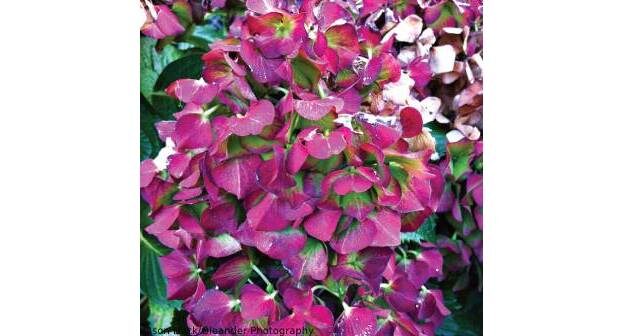
Answer: Bigleaf Hydrangea
This ornamental deciduous shrub can grow to six feet tall and are often seen in gardens—prized for their hardiness, colorful blooms, and dark green leaves. They have deeply colored “pom-poms” of grouped flowers consisting of both sterile and fertile florets. The flower bunches stand above or within darkly colored serrated green leaves.
Explore This Issue
ACEP Now: Vol 41 – No 08 – August 2022Although lacking scientific evidence, Hydrangea aborescens has been used in small doses in some communities as a diuretic for a variety of ailments ranging from urinary tract infections to prostatic enlargement. However, it is not safe during pregnancy.
Names
Hydrangea macrophyllia, bigleaf hydrangea, or Mop heads
Source of Toxins
Leaves, buds, flowers, and bark. The most poisonous component is the cyanogenic glycoside amygdalin. There are other biologically active compounds found in the hydrangea species including, dihydroisocoumarins and their glycosides, iridoid glycosides, secoiridoid glycosides, and flavonoid glycoside.1
Epidemiology
Poisoning is primarily seen in dogs and cats, but can also be seen in children and with intentional ingestions by adults.
Symptoms
The most common symptoms in animals (or children) that eat a few leaves are gastrointestinal, such as stomach pain, nausea, vomiting, and diarrhea. Complications with the central nervous system are typically only seen in large ingestions and symptoms consist of lethargy, labored breathing, seizures, and coma. Individuals with high skin sensitivity may develop contact dermatitis from handling the plants and especially its sap.
Antidotes and Management
There is no antidote. Treatment is supportive as directed by clinical illness.
Interesting Facts
- The dermal sensitization occurs more frequently in garden nursery workers and florists who frequently handle this plant.
- Thunberginol C, an active ingredient found in hydrangea macrophyllia, was found in a recent mouse study to prevent corticosterone-induced neuronal cell death and stress-induced anxiety.
- The flower color of Hydrangea macrophylla is determined by the pH of the soil it grows in. When grown in neutral or basic soils, hydrangea becomes red (anthocyanin, delphinidin-3-glucoside). When grown in acidic soil, the flowers become blue. This is related to the Al3+ ion—in acidic soil it is complexed with anthocyanidin and turns blue, in alkaline conditions the Al3+ ion is insoluble and the flowers are red.
 Dr. Hack (@oleanderphotography) is chief of the division of medical toxicology and vice chair for research at East Carolina University in Greenville, North Carolina. He enjoys taking photographs of beautiful toxic, medicinal, and benign flowers that he stumbles upon or grows in his garden.
Dr. Hack (@oleanderphotography) is chief of the division of medical toxicology and vice chair for research at East Carolina University in Greenville, North Carolina. He enjoys taking photographs of beautiful toxic, medicinal, and benign flowers that he stumbles upon or grows in his garden.
References
Kim HJ, Kang CH, Jayasooriya R, et al. Hydrangenol inhibits lipopolysaccharide-induced nitric oxide production in BV2 microglial cells by suppressing the NF-kappaB pathway and activating the Nrf2-mediated HO-1 pathway. Int. Immunopharmacol. 2016;35(6):61–69.
Pages: 1 2 | Multi-Page





No Responses to “Toxicology Answer: Take Care with the Bigleaf Hydrangea”